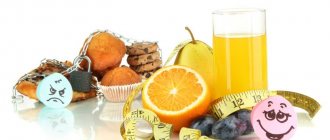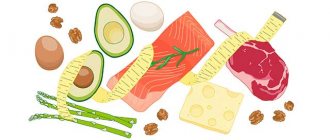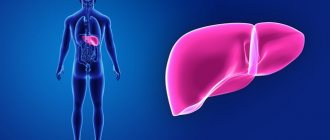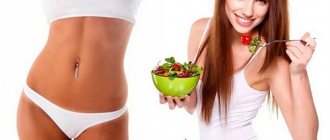Fourteen to sixteen years is the most unpredictable, rapid age, the time of active formation of the endocrine glands. If a correct understanding of food has not been formed before the age of 16, then with age it will be very difficult or almost impossible to change eating habits. And this threatens not only excess weight, but also serious health problems. Due to rapid growth and development at this age, there is an increased need for calories and nutrients.
Therefore, a poor, monotonous diet deprived of parental control can lead to the following problems:
- Dizziness and flashing spots before the eyes.
- Increased fatigue.
- Decreased immunity.
- Caries.
- Joint diseases.
- Bone fragility.
- Menstrual irregularities in girls.
- Decreased performance and concentration.
- Wasting or obesity.
Diet
Poor nutrition will sooner or later lead to health problems.
14–16 years are a time of active growth, which is accompanied by increased appetite. The task of parents is to explain to the teenager the harm of irregular eating dry food, to find an alternative to chips and buns, for example, dried fruits and nuts.
Meals should be four meals a day:
- Breakfast – 25%;
- Lunch – 35–40%,
- Afternoon snack – 15%,
- Dinner – 20–25% of daily nutrient requirements.
- Breakfast should include a snack, main course and drink. As a snack there can be vegetables or fruits, cheese or cottage cheese, eggs, salads. Used as hot porridge, vegetable stew, meat, fish. A drink in the form of hot tea, compote, jelly, milk.
Breakfast options for teenagers:
- Cottage cheese casserole with raisins or chocolate sauce.
- Oatmeal porridge, milk with dried fruits or berries.
- Millet milk porridge with pumpkin, banana, apple or raisins.
- Scrambled eggs, omelet, with meat, green pot or vegetables.
- Curd cheesecakes with sour cream or jam and yogurt.
- Buckwheat milk porridge with vegetables.
- The child often receives lunch at school. It should consist of soup, a second course (side dish with meat or fish), a third course may include a drink with cookies, yogurt, etc.
- For an afternoon snack, you can give your child fruit, cottage cheese, and vegetable salad.
- For dinner you can cook:
- Meat cutlets with vegetables;
- Cottage cheese casserole with apples;
- Omelette with pasta;
- Porridge with dried fruits;
- Dumplings with jam or berries and fruits;
- Fish soufflé with stewed carrots.
Before going to bed, as an option, you can offer a glass of kefir or milk.
The calorie content of food is calculated as follows: approximately 1.8 kcal should be consumed per 1 kg of body weight. This means that a teenager should eat approximately 3000 kcal per day, and with increased physical activity - 3500 kcal. Boys have a particularly high need for energy during this period, and it is not uncommon for those around them to be amazed by their increased appetite.
The oldest myth about healthy eating

Soup is not a necessary dish in a healthy diet for a teenager! This phrase may surprise many. After all, we all remember how mom worried every day whether we had eaten soup today. Yes, this is a really good dish. Boiled meat, vegetables, liquid. However, you can just as easily eat a salad and wash it down with a glass of cold water. Moreover, soups are also different. There is nothing healthy at all in those rich, fatty soups that our grandmothers love to cook. Therefore, if your child likes soup and eats it with pleasure, it’s good for him, but if not, you shouldn’t force him.
Quality food composition
The qualitative composition of food is as follows: the ratio of proteins, fats and carbohydrates is 1:1:4.
Squirrels
The average protein requirement per 1 kg per day is 2–1.5 g, and 50% of it should be animal protein (beef and poultry, fish, dairy products). It has a primary role because it is a structural material for growth and the immune system, and is necessary for muscle strength. With a lack of protein in the body, the brain suffers, memory and mental abilities decrease, the child gets tired faster, and the immune system cannot cope with infections.
In addition to high levels of protein, dairy products are rich in calcium, and meat is the main source of iron, while fish is rich in phosphorus and minerals.
On a note! Protein content per 100 g of product:
- Meat – 25 g,
- Hard cheese – 25 g,
- Fish – 20 g,
- Milk – 3 g,
- Eggs – 12 g,
- Nuts – 28 g,
- Bread – 8 g,
- Beans and peas – 5 g.
Fats
The daily requirement for fat is about 100 g. For a teenager, the role of fat is to synthesize sex and other steroid hormones. Vegetable oils, butter and sour cream are more useful. Vegetable fats are beneficial due to the content of polyunsaturated fatty acids, and animal fats are beneficial due to fat-soluble vitamins such as A and. 70% of incoming fats should be of vegetable origin and only 30% of animal origin.
On a note! Sources of vegetable fats:
- Vegetable oils (99.9% fat),
- Nuts (50–60%),
- Oatmeal (7%) and buckwheat (3%) cereals.
Sources of animal fats:
- Lard (90% fat),
- Butter (75%),
- Sour cream (about 30%),
- Cheeses (15–30%).
Carbohydrates
The daily requirement for carbohydrates is 10–15 g per 1 kg of body weight (depending on physical activity, ambient temperature, etc.). The main function of carbohydrates is to provide the body's energy needs. Sources of healthy carbohydrates for a child are cereals, vegetables, bread, legumes, greens, fruits, berries, and not buns, cakes and sweets. Vegetables are also the main source of vitamins and minerals, and the dietary fiber they contain normalizes intestinal motility. You can read about how to choose fresh and healthy vegetables and fruits in our relevant articles.
Liquid
The body's need for water in children and adolescents is higher than in adults and amounts to 50 ml per 1 kg of body weight (in adults - 30–40 ml). It is useful to drink mineral water, teas, decoctions of herbs and dried fruits, vegetable and fruit juices. Carbonated drinks are not able to quench thirst, they irritate the gastric mucosa, contribute to the leaching of calcium from bones and teeth, and can cause allergic reactions.
What foods are best to exclude from a teenager's diet?
To prevent your doctor from making a disappointing diagnosis, exclude foods that are not only unhealthy, but also help you gain weight very quickly:
- First of all, these are cheeseburgers, hamburgers, French fries and other similar delicacies from fast food restaurants, beloved by all children and teenagers. Not only are all these dishes very high in calories, they also contribute to the accumulation of “bad” cholesterol in the body, which reduces the elasticity of blood vessels.
- Chips. This is the second most “dangerous” specimen among products. Very tasty and light, they quickly satisfy hunger, but they are also quickly addictive and contribute to a favorable gain of kilograms, due to their high calorie content.
- Butter buns, in addition to a couple of pleasant tasty minutes, will also add weight. This does not mean that you don’t need to eat bread at all, but it’s better to limit baking, and lightly dry the bread or eat it as toast, and also choose the least high-calorie bread, for example, rye.
- Sweet. How can you refuse sweets if they are so delicious?! It is very difficult for a teenager to overcome his desires for food, so no one calls for not eating sweets at all. A daily portion within reasonable limits will not affect your weight, especially if you move a lot.
- Sweet carbonated drinks - it’s clear that teenagers love to indulge in such drinks, but you should try to reduce their quantity and accustom your child to regular water or freshly squeezed juices.
- Juices from boxes - these also need to be looked at carefully, as many of them contain a large amount of sugar. Therefore, carefully choose juices that contain it in small quantities, or better yet, without it at all.
In the video, Laysan Utyasheva shared her secrets on how to eat less sweets:
Consumption standards for vitamins, macro- and microelements for a teenager
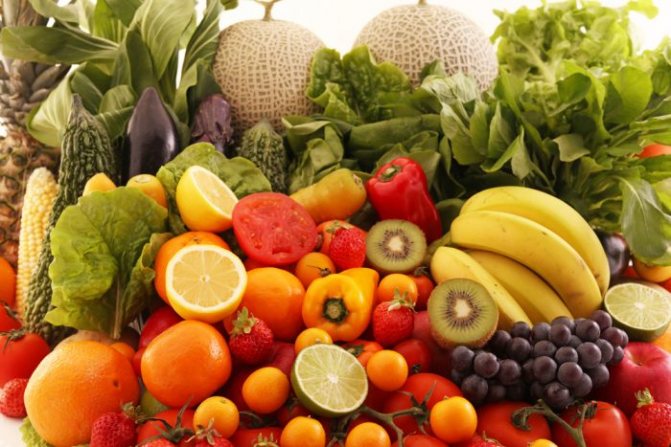
A teenager must receive the required amount of macro- and microelements and vitamins from food. In the summer, it is enough to eat a variety of fresh vegetables and fruits (berries), and in the winter-spring period you can take a course of vitamin preparations. It is believed that by eating six fruits of different colors a day, we meet the need for all the necessary vitamins and minerals!
Calcium (1.2 g/day) and magnesium (300 mg/day) are needed for building bones and teeth; magnesium also relieves the excitability of the nervous system, helps cope with insomnia, and has a beneficial effect on the heart muscle.
Phosphorus (1.8 g/day) is necessary for metabolism, normal functioning of the nervous system and brain, muscles, liver and kidneys.
Iron (15–18 mg/day) is necessary for hematopoiesis and saturation of the body with oxygen.
Sodium (4 g/day), chlorine and potassium (4 g/day) normalize water-salt metabolism, acid-base balance, potassium removes excess water and sodium from the body.
Iodine (130 mcg/day) is necessary for the normal functioning of the thyroid gland.
Fluoride (2–3 mg/day) is involved in the construction of bones and teeth.
Vitamins are needed for the normal course of metabolic processes and the functioning of the body as a whole. They participate in various biochemical processes, ensure the physical and mental performance of a teenager, and strengthen the immune system.
Daily vitamin intake for teenagers:
- A – 1.5 mg;
- B1 – 1.8 mg;
- B2 – 2.5 mg;
- B6 – 2.0 mg;
- B12 – 3.0 mcg;
- RR – 19 mg;
- C – 75 mg;
- E – 15 mg;
- D – 2.5 mg.
Important Terms
- try to completely avoid salt, pepper and spices;
- prepare juices yourself from fresh fruits;
- Steam the meat.
To start the weight loss process, a teenager’s daily caloric intake should be reduced by 20%. For girls - 2500 kcal, for guys - 2700. This figure can be reduced by 20%, but no more, otherwise problems with the health of the growing body will begin. For a teenager to grow, preference in the daily diet should be given to healthy carbohydrates (vegetables, cereals, fruits). Also important is the frequency and regularity of food intake. It is advisable to eat at the same time, without skipping meals. Frequency – 4 times a day.
It is better to bake dishes in the oven, steam or boil them. Completely avoid fried and fatty foods. Adequate physical activity will not only strengthen and shape muscles, but will also speed up the fat burning process. Effective exercises for girls are dancing and swimming. For boys - football, running, team games.
By following these simple rules, you can really lose weight without health problems. Extra pounds will go away naturally, without stress to the body.
Weight and height standards for teenagers 14–16 years old
| Age | Girls | Boys | ||
| Height/cm | Weight, kg | Height/cm | Weight, kg | |
| 14 years | 155,4–163,6 | 48,2–58,0 | 156,2–167,7 | 42,8–56,6 |
| 15 years | 157,2–166,0 | 50,6–60,4 | 162,5–173,5 | 48,3–62,8 |
| 16 years | 158,0–166,8 | 51,8–61,3 | 166,8–177,8 | 54,0–69,6 |
Reviews and results
Vlada, 15 years old: “... At school they teased me and called me “fat”, they constantly found fault with me about this, and the boys never stood up for me, and did not even look in my direction. I didn’t even want to go to school, I was looking for excuses, either a fever or a stomach ache... I tried different diets, but my willpower didn’t allow me to exhaust myself, and I didn’t see any results. I looked for information on the Internet and consulted with my mother. We decided to try the teenage diet. My mother’s nutritionist helped me create a daily diet. I liked proper nutrition, I didn’t have any pain, and I didn’t feel hungry. In the evenings, I started walking, and then switched to light jogging. After just 2 weeks I became 5 kg lighter. In six months I managed to get rid of 15 extra pounds, I became thinner, my complexion improved, and my self-esteem rose.”
The diet is well tolerated, forms the right habits, improves health, improves immunity, and allows you to get rid of excess weight without harm to the growing body. The diet does not have a strict time frame; it can be followed for a long time.
Diet for weight loss for teenagers 14–16 years old
To estimate body weight, it is necessary to calculate the body mass index (BMI = the ratio of body weight in kg to height in square meters). With a balanced diet, the normal BMI is 20–25 kg/m2. If the BMI is less than 18.5 kg/m2, it means that the teenager’s body needs additional energy; if the BMI value is 25–30 kg/m2, there is excess body weight, and values more than 30 kg/m2 indicate obesity, therefore, energy with There is a lot of food intake, but not enough physical activity, which risks heart, liver and kidney diseases, and diabetes.
First and most importantly: the teenage diet is simply the exclusion of harmful foods, those that, in principle, are useful for a person of any age to avoid. In a teenage diet, it is important to understand that due to accelerated metabolism, it is easier to lose weight than for adults; you just need to eat a varied and nutritious diet. What does it mean:
- Reduce food intake by a fifth.
- Eliminate harmful foods (the list is provided below), replacing them with protein-containing ones (meat, fish, dairy products, legumes). Add physical activity.
- The cause of extra pounds in teenagers, as a rule, is excessive and unhealthy eating, so the first thing you need to do is stop forcing your child to finish eating when he is already full.
- Before going on a diet, make sure your child is actually overweight.
- Never force your child to go on a diet if he does not want to.
- If a child who is truly overweight decides to go on a diet himself, support him in this, create a varied menu with him, or take part in this diet yourself.
- Have dinner no later than 18–19 hours;
- 30 minutes before meals, teach yourself to drink a glass of water;
- You should eat fractionally (6 times a day) in small portions, so as not to accustom your stomach to large volumes;
- The afternoon snack and dinner taken together should not exceed lunch in calories. Find out more about the calorie content of foods here.
Losing weight at different ages
Adolescence is considered to be the period of 12-17 years. The appearance of excess body weight usually occurs at the beginning of puberty - 13-14 years.
A surge of hormones, psychological experiences, and emotions can cause both refusal of food and its consumption in large quantities. At this age, parents should take care of adjusting their daily routine, nutrition and physical activity to avoid weight problems. By the age of 16, the process of puberty is completed, the excess weight gained gradually disappears, unless its appearance is caused by health problems. If your weight does not return to normal, you should seek help from nutritionists, psychiatrists, gynecologists, endocrinologists, and fitness trainers.
Girls 12-13 years old
During this period, it is important to review the child’s nutrition, provide him with correct eating habits and a healthy diet. Excess weight at this age can cause the development of diabetes, increased blood pressure, and heart and vascular diseases. Diets that adult women use are not suitable for a teenage girl. To lose weight, it will be enough to exclude unhealthy foods from the menu, balance your diet, follow a diet, and lead an active lifestyle.
Girls 14−16 years old
The cause of weight gain at this age may be a hormonal imbalance, so losing weight should begin after examination and consultation with a doctor. If no health problems are identified, the teenager needs to switch to a healthy diet and exercise. Physical activity should be at least 3 times a week. For home training, you can choose the following program:
- jumping rope as a warm-up;
- 20 minutes of easy running;
- 3 minutes rest;
- 30 squats (divided into 4 sets);
- 30 push-ups (3 sets);
- Press 45 times (3 sets).
Advice for boys
Methods for losing weight for boys are the same as for girls. The only difference is the increase in physical activity:
- 30 minutes of running;
- 60 push-ups (divided into 4 sets), you can add clapping;
- 60 squats or lunges (4 sets);
- 100 leg raises from a lying position;
- 15 minutes of running.
Boys under and after 15 years of age can engage in swimming, basketball, and football. In this case, the diet should contain a lot of protein to activate the muscular system.
Exception
Products that become the main cause of obesity in adolescents, i.e. they should be completely excluded from consumption:
- Chips, soda, chocolate bars and candies.
- Industrially produced sauces (ketchups, mayonnaise, adjika, etc.).
- Processed meat products (sausage, ham, frankfurters).
- Bakery products and fast food.
- Fried food (especially cutlets and potatoes, fried pies).
You should eat mostly home-cooked food. Vegetable soups, cereal porridges (you shouldn’t get carried away with semolina and oatmeal), bread, seafood, dairy products (whole milk and kefir, cheese and cottage cheese), eggs, weak tea, it is important to stew and bake chicken, lean pork, beef. Potatoes can be consumed no more than twice a week, boiled or baked. Pasta can only be eaten from durum wheat. Do not overuse sweet and starchy foods.
In a teenage diet, you can arrange fasting days, on which you can eat kefir, buckwheat with water and fresh/baked fruits. But it is recommended to arrange such days a maximum of one day a week. Calorie content – up to 1000 per day. A more significant decrease in nutritional value and, especially, complete hunger on fasting days will cause various disorders in the teenager’s body, including overstimulation of the appetite center in the brain, which can lead to a breakdown: the child will eat everything around and eventually gain more than he lost before. .
Physical activity plays a significant role; doing something for two hours two to three times a week will be enough. Any sport is suitable, as long as it brings pleasure to the teenager (running or swimming, yoga or dancing, rollerblading or skating, skiing, wrestling and boxing, team sports, football, volleyball - the list goes on and on).
Why do teenagers get fat?
The reasons for the appearance of excess weight are due to an incorrect or passive lifestyle, ill-organized nutrition, and less commonly, they arise due to diseases. To understand how to lose weight for a teenager, you need to find out the reason that caused excess weight gain. Possible causes of excess weight in adolescence:
- non-compliance with diet, night snacks;
- eating in front of the TV;
- a large number of salty, sweet and flour products;
- maintaining a sedentary lifestyle;
- fast food, crackers, pizza, chips, cocktails, etc.;
- large portions of food;
- endocrine diseases;
- hormonal disorders;
- diseases of the gastrointestinal tract;
- taking medications.
The cause of weight gain in girls after the start of menstruation is hormonal changes. To bring your weight back to normal, it is important to change your diet and increase physical activity.
Diet menu for teenagers

Calorie content: daily calorie intake should be reduced by no more than 20%. This means: girls - approximately 2500 calories per day, and boys - 3000. Moreover, if the child is actively involved in sports, we increase this calorie content by 20%.
Daily diet: 30% fat, 20% protein, 50% carbohydrates.
For breakfast you can serve:
- croutons with hard cheese / 1 soft-boiled egg or omelette / cottage cheese casserole with fruit or rice / buckwheat porridge;
- 1 tomato or cucumber;
- tea/milk/kefir.
For second breakfast:
- low-fat yogurt;
- fruit/vegetable
Lunch should consist of the first, second and third:
- vegetable soup;
- spaghetti/stewed vegetables/baked potatoes/porridge with meat;
- vegetable salad (seasoned with vegetable oil);
- juice/tea/compote.
Perfect for an afternoon snack:
- 1 vegetable;
- a glass of kefir.
Dinner:
- fish baked with vegetables/cottage cheese with dried fruits and sour cream/vegetable salad with a piece of meat;
- a glass of juice.
Essential Nutrients
To ensure proper nutrition for teenagers, you need to adhere to a number of rules and principles. One of the basic rules is the correct ratio of essential nutrients, or nutrients: proteins, fats and carbohydrates. After all, about 40% of the human body consists of these substances, while the remaining 60% is water. The optimal ratio of these nutrients to ensure normal growth and development of a teenager’s body is: 1 part protein, 3 parts fat and 5 parts carbohydrates.
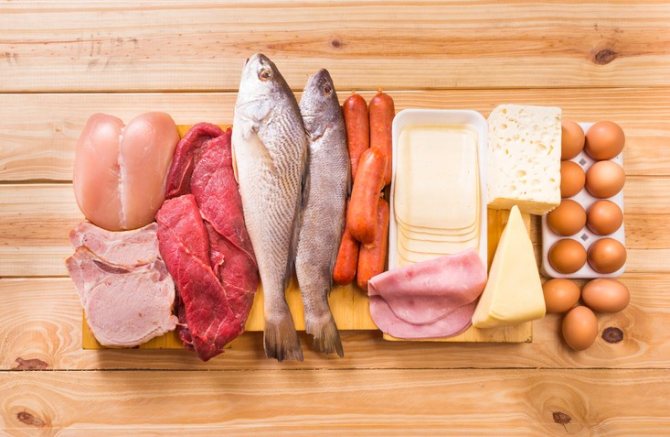
The outcome of constant unhealthy diets
Poor nutrition in youth destroys bones in old age
The cause of joint diseases (arthrosis) in old age is a diet with insufficient calcium and vitamin D in childhood.
The likelihood of developing osteoporosis increases in adolescents who exhaust themselves with diets, especially in girls suffering from eating disorders. Girls are still at risk of bone tissue destruction, since at this age active growth and formation of the skeleton occurs, and prolonged fasting can negatively affect this process.
If a girl’s diet is varied and balanced, rich in calcium, protein and vitamin D, this will reduce the risk of osteoporosis in the future.
Delayed puberty
ZPR occurs with a lack of body weight (unbalanced diet, low calorie food, diet, fasting) or, conversely, with obesity. Delayed puberty can occur with intense sports activities if the teenager eats little.
Anorexia
One of the sad consequences of incorrect fanatical diets is anorexia, which turns the human body into a skeleton covered with skin. Usually girls who are dissatisfied with their appearance bring themselves to this state. First, diets appear, then refusal to eat at all, inducing vomiting, taking laxatives and diuretics.
Interesting to know. Anorexia is the most common mental illness of adolescence. 50% of girls think they are overweight. 80% of girls this age have already been on a diet at least once. 2–4% of girls suffer from anorexia. Anorexia ranks first in terms of mortality from mental illness.
What parents need to pay attention to if they suspect anorexia in their child:
- sudden weight loss within a month;
- weakness, fatigue, irritability;
- frequent mood changes;
- refusal to eat with family or friends;
- disappearance after a feast (monitor your child if you suspect that he is vomiting after eating);
- disruptions in the menstrual cycle, cessation of menstruation;
- obsession with appearance and nutrition;
- sleep disturbance;
- constant cold and chills;
- increased physical activity in the absence of adequate nutrition.
In addition to the outwardly terrifying appearance, anorexia causes problems with the functioning of the kidneys and gastrointestinal tract, osteoporosis and anemia develop, disruptions in the functioning of the heart and central nervous system may occur, and the mind also suffers.
Quitting the diet
A smooth exit from the diet is recommended. In general, a teenage diet implies a balanced and proper diet, which you should try to adhere to constantly. Therefore, when leaving the diet, you can sometimes allow yourself your favorite dishes, but try to correct your weight through physical activity if there are errors in your diet. You can accustom yourself to a different pattern: you eat forbidden foods, and the next day you deload on a completely healthy menu (fruits, vegetables, dairy products, seafood, chicken eggs).
Also, upon completion of the diet, it is important to ensure that the teenager has a full breakfast and at least two meals, the volumes of which need to be controlled. Physical activity and adequate water regime are required to normalize metabolism. Try to give up fast food, sweets, baked goods, processed foods, pasta, salty and fatty foods. Avoid French fries, crackers, chips, candy bars like Snickers and Mars, energy drinks and soda.
Diets for the main physiological problems of adolescence
Diet rich in iron-containing foods
Boys especially need iron to maintain rapid growth, because during this period muscle mass doubles, and girls need it not only to maintain growth, but also to replenish blood loss during menstruation.
The diet includes the following products:
- Sea fish and seafood.
- Beef.
- Beans, peas, beans.
- Buckwheat.
- White cabbage.
- Spinach.
- Hematogen.
Basic Rules:
- In the human body, iron is absorbed with the help of vitamin C, so when consuming iron-containing foods, it is important to combine them with sources of vitamin C (citrus fruits, rose hips, apples, peaches, sweet red peppers, berries, peas, etc.).
- Do not consume foods that reduce iron absorption: black and green tea, coffee, mint, chamomile.
Diet for night blindness
The main cause of night blindness is a lack of vitamins A, B2 and PP. Also, ophthalmologists do not recommend that teenagers go on diets that exclude meat and fish from the diet.
Products needed for a teenager suffering from night blindness:
- Vegetables and fruits of red and yellow color: pumpkin, carrots, sweet peppers, sea buckthorn, gooseberries, currants, cherries, apricots.
- Liver (beef and pork), fish, legumes.
- Greens: spinach, celery, green onions and parsley.
- It is also recommended that children with this problem eat egg yolk, cheese, cream, and butter every day.
- If possible, it is good to eat black and red caviar, cod liver and fish oil.
- It is recommended to drink rosehip decoction in courses.
Authorized Products
Taking into account nutritional standards for teenagers, soups must be present on the menu. They can be cooked in meat broth without flour dressing or in vegetable broth. You can add eggs to soups. Consumption of cereals in the diet is limited. Oatmeal and buckwheat porridge are allowed for consumption; they can be consumed, but not often. It is recommended to limit spices and salt as much as possible.
Everyone knows about the benefits of seafood. An undeniable advantage is the lack of fat in them (scallops, seaweed, shrimp, squid). Seafood is rich in microelements (manganese, iodine, iron, magnesium, potassium) and B vitamins.
It is better to steam, boil, bake, stew food. During frying, a huge amount of fat is absorbed into the food, so this method of cooking is limited.
Table of permitted products
| Proteins, g | Fats, g | Carbohydrates, g | Calories, kcal | |
Vegetables and greens | ||||
| vegetables | 2,5 | 0,3 | 7,0 | 35 |
| greenery | 2,6 | 0,4 | 5,2 | 36 |
Fruits | ||||
| fruits | 0,8 | 0,3 | 11,5 | 56 |
Berries | ||||
| berries | 0,7 | 0,3 | 9,4 | 44 |
Mushrooms | ||||
| mushrooms | 3,5 | 2,0 | 2,5 | 30 |
Nuts and dried fruits | ||||
| nuts | 15,0 | 40,0 | 20,0 | 500 |
| candied fruit | 2,0 | 1,0 | 71,0 | 301 |
| dried fruits | 2,3 | 0,6 | 68,2 | 286 |
Cereals and porridges | ||||
| porridge | 3,3 | 1,2 | 22,1 | 102 |
| porridge on water | 3,0 | 0,6 | 18,5 | 91 |
| porridge with milk | 3,3 | 2,9 | 17,4 | 105 |
Bakery products | ||||
| crackers | 11,2 | 1,4 | 72,2 | 331 |
| Rye bread | 6,6 | 1,2 | 34,2 | 165 |
Confectionery | ||||
| jam | 0,3 | 0,2 | 63,0 | 263 |
| jam | 0,3 | 0,1 | 56,0 | 238 |
| jelly | 2,7 | 0,0 | 17,9 | 79 |
| paste | 0,5 | 0,0 | 80,8 | 310 |
Raw materials and seasonings | ||||
| ginger | 1,8 | 0,8 | 15,8 | 80 |
| honey | 0,8 | 0,0 | 81,5 | 329 |
Dairy | ||||
| milk | 3,2 | 3,6 | 4,8 | 64 |
| kefir | 3,4 | 2,0 | 4,7 | 51 |
| cream | 2,8 | 20,0 | 3,7 | 205 |
| sour cream | 2,8 | 20,0 | 3,2 | 206 |
| Ryazhenka | 2,8 | 4,0 | 4,2 | 67 |
| kumiss | 3,0 | 0,1 | 6,3 | 41 |
| katyk | 2,8 | 3,2 | 4,2 | 56 |
| yogurt | 4,3 | 2,0 | 6,2 | 60 |
Cheeses and cottage cheese | ||||
| cheese | 24,1 | 29,5 | 0,3 | 363 |
| cottage cheese | 17,2 | 5,0 | 1,8 | 121 |
Meat products | ||||
| beef | 18,9 | 19,4 | 0,0 | 187 |
| veal | 19,7 | 1,2 | 0,0 | 90 |
| mutton | 15,6 | 16,3 | 0,0 | 209 |
| rabbit | 21,0 | 8,0 | 0,0 | 156 |
| venison | 19,5 | 8,5 | 0,0 | 154 |
| horsemeat | 20,2 | 7,0 | 0,0 | 187 |
| lamb | 16,2 | 14,1 | 0,0 | 192 |
Bird | ||||
| chicken | 16,0 | 14,0 | 0,0 | 190 |
| chickens | 18,7 | 7,8 | 0,4 | 156 |
| turkey | 19,2 | 0,7 | 0,0 | 84 |
Eggs | ||||
| omelette | 9,6 | 15,4 | 1,9 | 184 |
| eggs | 12,7 | 10,9 | 0,7 | 157 |
Fish and seafood | ||||
| fish | 18,5 | 4,9 | 0,0 | 136 |
Non-alcoholic drinks | ||||
| mineral water | 0,0 | 0,0 | 0,0 | — |
| coffee | 0,2 | 0,0 | 0,3 | 2 |
| green tea | 0,0 | 0,0 | 0,0 | — |
| black tea | 20,0 | 5,1 | 6,9 | 152 |
Juices and compotes | ||||
| compote | 0,5 | 0,0 | 19,5 | 81 |
| juice | 0,3 | 0,1 | 9,2 | 40 |
| * data is per 100 g of product | ||||
Need for food
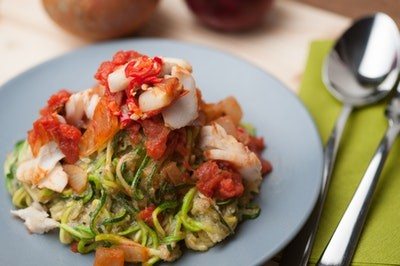
The energy metabolism of a 14-15 year old child differs from the catabolism of adults. A mature person consumes approximately 1 kcal/1 kg per hour during rest, and a teenager consumes 1.8 kcal.
Children in adolescence are active; they spend approximately 600 kcal per day on movement. Their bone and muscle tissue grows rapidly, which consumes from 60 to 100 kcal. The total energy expenditure of a teenager is from 2400 to 2500 kcal in 24 hours.
To satisfy the body's needs, as well as replenish energy reserves, a child should consume 2500-3000 kcal.
Attention! The daily amount of calories for a teenager who regularly plays sports is from 3100 to 3500 kcal.
In addition, you need to monitor the quality of the dishes. They should consist of proteins, fats, carbohydrates in the following ratio - 1:1:4. To ensure that the tissue building process is not disrupted, a teenager should receive up to 100 g of protein per day. Animal proteins (meat, poultry, fish) are preferable.
Important! A vegetarian diet is not suitable for all children, as there is a risk of iron deficiency anemia.
Guys should consume 100 g of fat, which provides energy and helps build cells. It is recommended to use vegetable oils, they improve the condition of the skin.
Carbohydrates are the main source of energy; a teenager should consume 400 g of nutrients per day.
You may also be interested in: Proper nutrition: menu for the week


